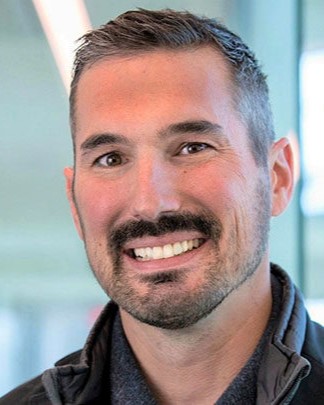
FULL-DAY Workshop – October 5, 2023 – Detroit, MI, USA
Robotic leg prostheses have evolved from devices tethered to a power supply and a desktop computer to self-contained devices with onboard electronics and batteries. Powered leg prostheses are now able to assist during walking, ambulation on stairs and ramps, and sit-stand transitions. However, there are significant challenges that the field needs to address for powered prostheses to fully realize their potential.
This workshop will focus on the state-of-the-art and open challenges in powered prosthetics. Top researchers in the field will present their current and future approaches to designing and controlling powered prostheses. Live demonstration of robotic leg prostheses will provide hands-on experience with leading technology. Poster sessions and panel discussions will provide further opportunities for participants to interact. This workshop will allow both established researchers and those new to the field of robotic prostheses, to experience where the field is today and what challenges lie ahead.
Invited Speakers
[bs_row class=”row”]
[bs_col class=”col-sm-3″]

RaffaellA Carloni, PhD
[/bs_col]
[bs_col class=”col-sm-3″]

Simona Crea, PhD
[bs_col class=”col-sm-3″]

Michael Goldfarb, PhD
[bs_col class=”col-sm-3″]

Robert D. Gregg, IV, PhD
Associate Professor and Associate Director of Robotics
Electrical Engineering and Computer Science, Robotics Institute
University of Michigan
[/bs_col][/bs_row]
[bs_row class=”row”]
[bs_col class=”col-sm-3″]

He (Helen ) Huang, PhD
[bs_col class=”col-sm-3″]

Tommaso Lenzi, PhD
[bs_col class=”col-sm-3″]

Ann Simon, PhD
[/bs_col]
[bs_col class=”col-sm-3″]

Hao Su, PhD
[/bs_row]
[bs_row class=”row”]
[bs_col class=”col-sm-3″]

Qining wang, PhD
[bs_col class=”col-sm-3″]

Cara Gonzalez Welker, PhD
[bs_col class=”col-sm-3″]

Max Shepherd, PhD
[/bs_col]
[bs_col class=”col-sm-3″]

Elliott Rouse, PhD
Associate Professor
[/bs_row]
Workshop Program
[table id=9 /]
POster PResentations
- Recognizing Transition Intent Between Surfaces of Varying Stiffness via EMG, Kinematic, and Ground Reaction Force Data, Charikleia Angelidou and Panagiotis Artemiadis, University of Delaware
- Electromagnetic Suspension of Robotic Leg Prostheses, Will Flanagan, Alexandra Stavrakis, Nicholas Bernthal, and Tyler Clites, University of California, Los Angeles
- Model-Based Prosthesis Control with Real-Time Force Sensing, Rachel Gehlhar Humann and Aaron D. Ames, California Institute of Technology
- Evaluation of functional benefits of a powered knee ankle prosthesis in comparison to state-of-the-art microprocessor-controlled prostheses, Kyle Embry and Arun Jayaraman, Shirley Ryan AbilityLab
- The effect of power on intersegmental coordination while walking on a knee ankle prosthesis, Nili Krausz and Tamar Flash, Weizmann Institute of Science
- Phase Variable Impedance Hybrid Volitional Control of Robotic Prosthetic Ankle, Ryan R. Posh, James P. Schmiedeler, and Patrick M. Wensing , University of Notre Dame
- Exploring Dielectric Elastomer Actuators as Artificial Muscles for Powered Prosthetic Limbs, Quentin Richards, Gymama Slaughter, Krishnanand Kaipa, Old Dominion University
- Magnetomicrometry: Real-Time Muscle Tissue Length Tracking for Robotic Leg Control, Cameron R. Taylor, Christopher C. Shallal, Rick J. Casler, Seong Ho Yeon, Tsung-Han Hsieh, Hyungeun Song, Ellen G. Clarrissimeaux, Hugh M. Herr, Massachusetts Institute of Technology
Robotic leg demonstrations
[bs_row class=”row”]
[bs_col class=”col-sm-6″] [youtube https://www.youtube.com/watch?v=rNwx8vJZBhY&w=200&h=120] [/bs_col]
[bs_col class=”col-sm-6″] [youtube https://www.youtube.com/watch?v=sBC12VDbaes&ab_channel=BionicLocomotion=200&h=120] [/bs_col]
[/bs_row] [bs_row class=”row”]
[bs_col class=”col-sm-6″] [youtube https://www.youtube.com/watch?v=Gl4ghrrXmRo&w=200&h=100] [/bs_col]
[bs_col class=”col-sm-6″] [youtube https://www.youtube.com/watch?v=DObM6gXdK7U&w=200&h=100] [/bs_col]
[/bs_row]
Sponsors
IEEE/RAS TC on Wearable Robotics
IEEE/RAS TC for Cyborg and Bionic Systems
IEEE/RAS TC on Rehabilitation and Assistive Robotics
